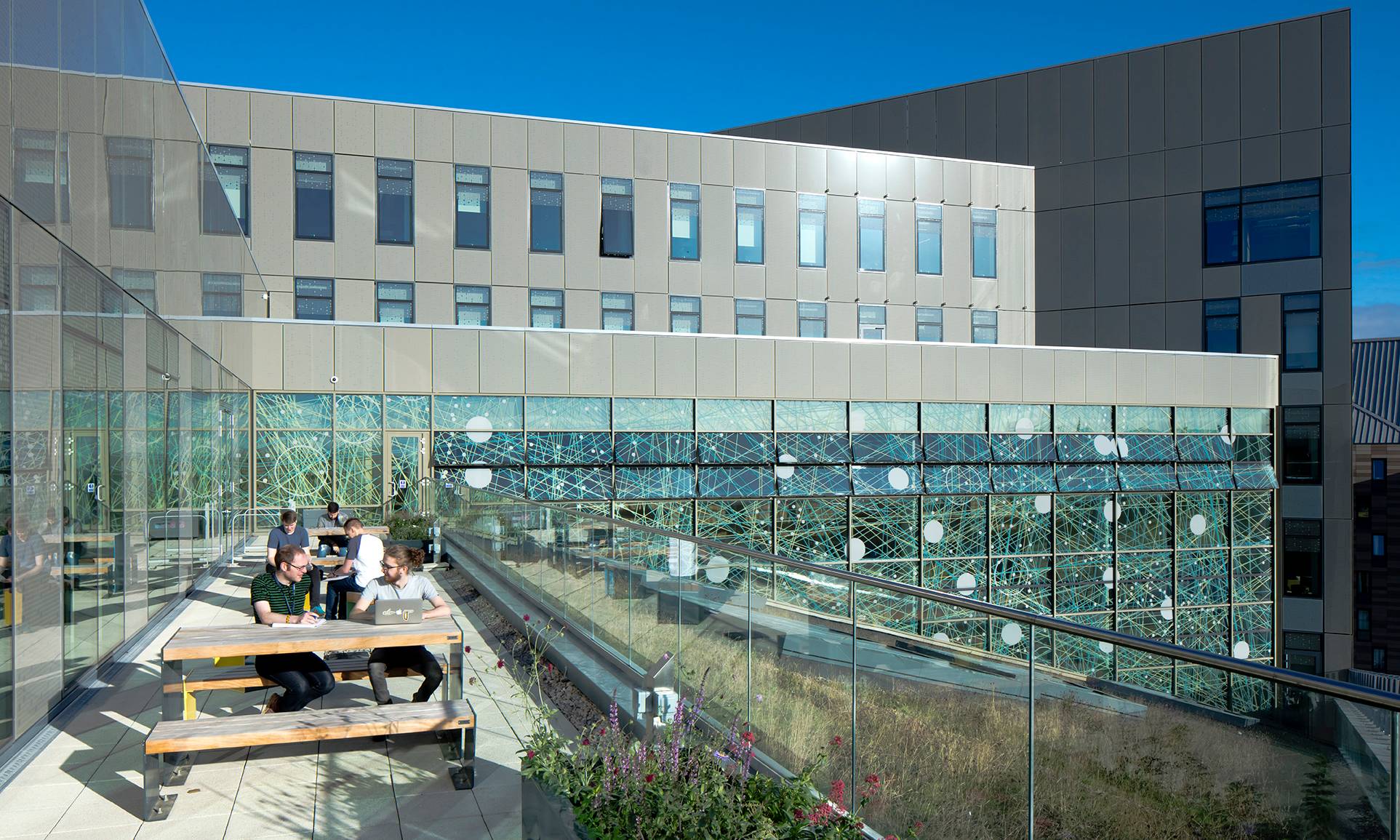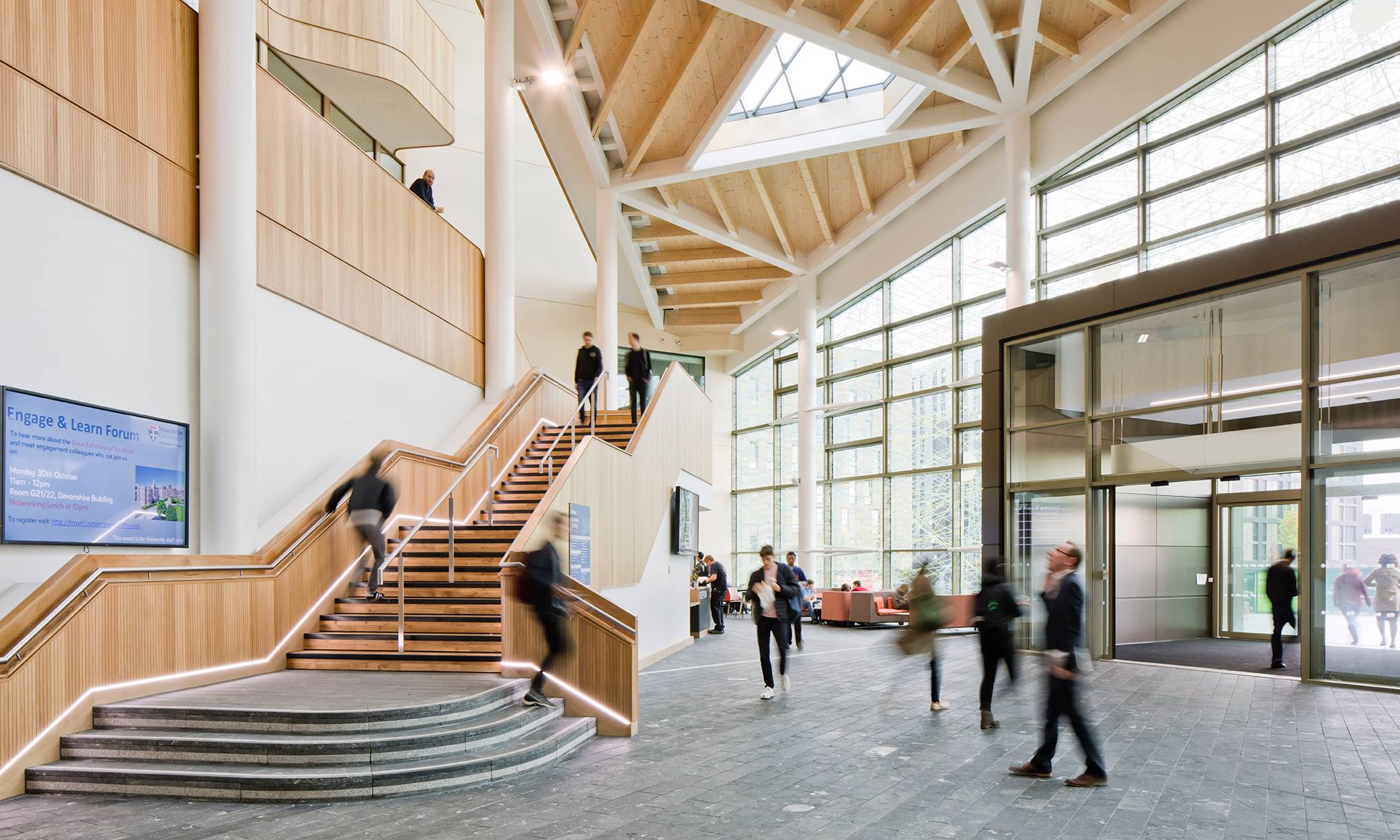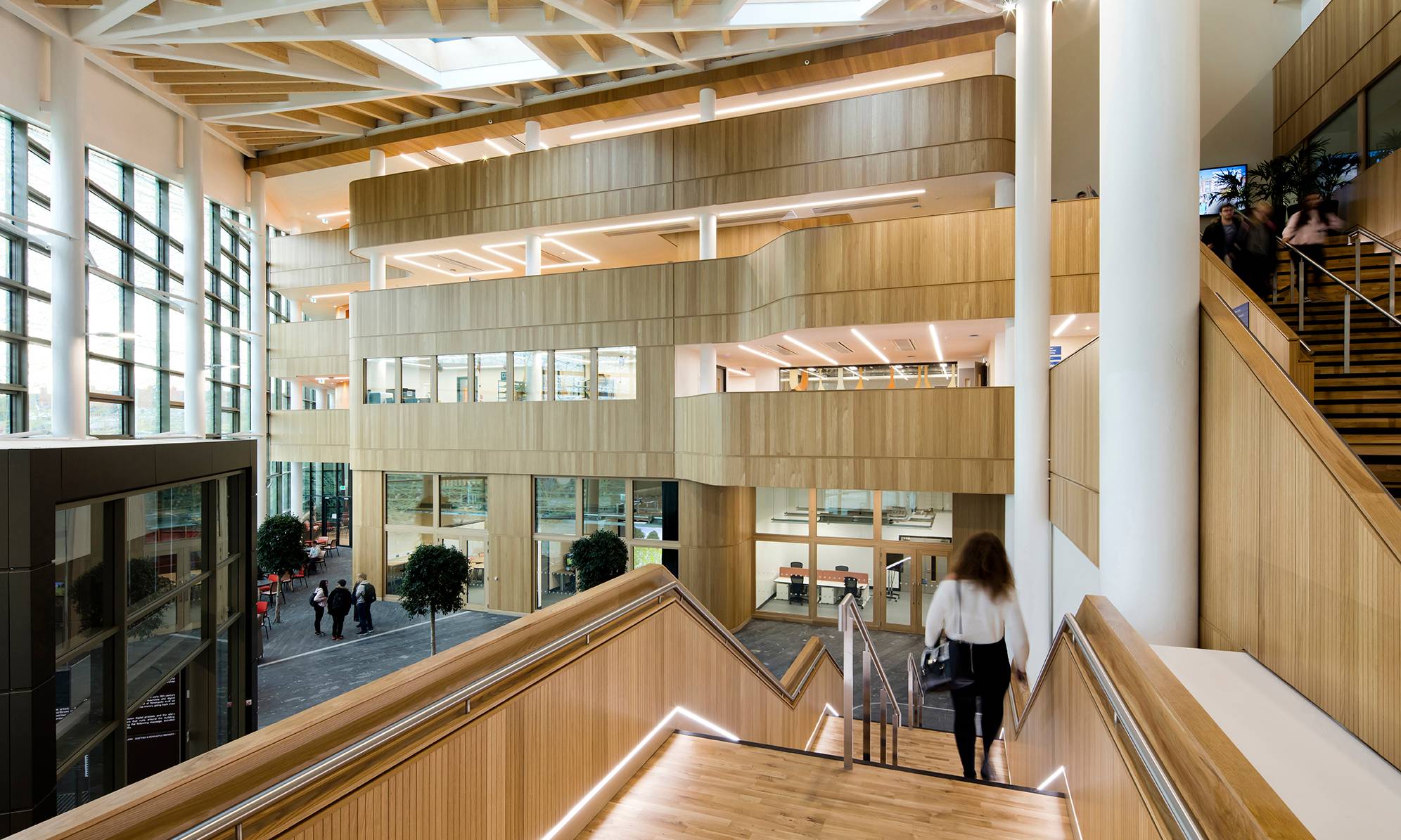Pushing the boundaries of sustainability at Newcastle University’s Urban Sciences Building by Mark Dowson, Buro Happold
For those of us working in design engineering, Building Information Modelling (or BIM) is one of the most disruptive technological innovations we have seen in recent years. Its use helps simplify the design process and enables us to construct complicated, complex structures. But the collection and use of ‘building information’ needn’t stop when construction ends. Through the creation of smart buildings, BIM can go on to push the boundaries of sustainability by optimising efficiency, managing energy consumption and improving ongoing building performance.
A case in point is Newcastle University’s Urban Sciences Building. Located in the city’s new Helix quarter, a city-centre development fast becoming renowned as a global centre for innovation, the 12,800m2 Urban Sciences Building (USB) houses Newcastle University’s School of Computing alongside a series of innovative labs focused on research into the urban environment.
Opened in 2017, it has set a new benchmark for building design. Not only is it an exemplar of sustainable construction and electrically led design, it is also a ‘living laboratory’ – a smart building designed to enable continuous research and learning in the field of energy management.
Newcastle University is known for its pioneering spirit and, with innovation a core element of the brief for the USB, a number of PhD researchers now have their hands on the data from the building and are already creating some fascinating outputs that we believe are a first in building management.
In a feat of engineering, the University installed over 4,000 digital sensors throughout the building to constantly monitor environmental conditions and energy use. Through a collaboration between the University’s estates team and PhD researchers, with support from the wider project team, a 3D digital twin of the entire building has been created. This enables live data from the thousands of sensor points to be visualised in a 3D visualisation model.
Using this digital twin, the University’s facilities and building managers can focus in on a specific room, floor or area of the USB and look at how internal environmental conditions are performing to within seconds of the reality. From an FM point of view, this means that if someone complains that an environment is too hot, they can instantly review the temperature in that space to see if it has in fact increased, and adjust it accordingly, or whether that person just needs to take off their jumper. This is a real leap forward for facilities management and potentially, energy efficiency.

Importantly, the modelling enabled by the sensors in the building also helps the University’s researchers to forecast how the building will behave under future scenarios. An example of this is in the University’s EPSRC funded ‘Building as a Power Plant’ project which we are supporting. Here, PhD researchers are looking at evaluating the building’s potential to provide rapid demand response when the national electricity grid comes under strain through the removal of the smaller, non-critical energy loads of individual buildings. Although this kind of scenario testing has been done on a mass scale, for very large energy consumers, it has never before been tested with a single building – another first for the USB.
The theme of innovation and research has also been applied to the very fabric of the building. Knowing that the USB would provide a home for the university’s urban environment researchers, the estates team were keen to understand if and how the building could support these academics in their work, to test future technologies that could drive new thinking in the energy management sector – could the building itself become a laboratory? The answer, of course, was yes and the living laboratory concept was born.
Through extensive engagement with the University’s researchers and the design team working in collaboration with Hawkins/Brown architects, we embedded and enabled a host of technologies within the building into the design concept which would directly support ongoing academic work. To give you just a few examples: sensors in concrete floor slabs measure the temperatures to enable monitoring of the thermal mass and associated night-time purging; the soil moisture levels of the building’s green roof are constantly monitored; supercharging points for electric vehicles are linked to a microgrid within the building and solar photovoltaic-thermal (PV-T) panels on the roof generate renewable electricity and heat.
In yet another first, the building also houses a unique energy storage test bed, connecting multiple battery and super-capacitor packs to the main grid, which also feeds power directly to a DC micro grid serving one floor of the building. Echoing the continued theme of ongoing shared learning, this facility is open to both industry and academia for investigation and testing of these emerging storage and smart grid technologies. This ongoing research is, we believe, another first in facilities management.

One final nod to smart energy management picks up on the history of the building’s location. The restrictions of the site meant it had to have a south-facing atrium so working collaboratively with researchers at the University and Hawkins\Brown we adopted an innovative approach to designing a glazed façade which met the stringent g-value requirements. The glazed solution was a fritted façade pattern consisting of lines, dots and circles based on a punch card technique used in the early 19th century. The dotted pattern runs right around the building and carries a coded message illustrating the rich history of the site and its previous uses. It says: Gallowgate – North Elswick Colliery – Scottish & Newcastle Brewery – Science Central.
But, a truly sustainable building isn’t solely focused on managing the current status quo, it is also a building that can flex and adapt to future uses. Early on in the process of designing the USB, we worked with both the University’s estates team and groups of academics who would be using it day-to-day to get a detailed understanding of their differing needs. This allowed us to create the building with them in mind, meaning it wasn’t overly customised for any one group. It also put our focus firmly on flexibility, so large portions of the building’s fit-out elements are reversible meaning entire floors can easily be reconfigured, giving it longevity.
To understand the positive impact this could have, we carried out surveys at the three university buildings where the people who would be moving into the USB were previously based to measure their perceived productivity, wellbeing, comfort and satisfaction levels. The surveys were repeated once they had moved into the new building and showed that users felt their new environment had increased their productivity by up to 11.5%. The feedback highlighted that they liked the daylight levels and felt healthy in the building and 71% of the students and staff based in the USB said its design made it easier for them to collaborate.
The information that data can provide to a building’s managers is a way to add real value to its day-to-day operations. Bricks and mortar are static, but the data that flows through them can help us adapt the built environment around us to changing times. The USB is a really exciting building and is an inspiring exemplar of sustainability and energy management. And, with the University team’s focus on ongoing improvement and the development of new energy innovations, its green credentials will only get better and better over time.
For further information please visit https://www.burohappold.com/


